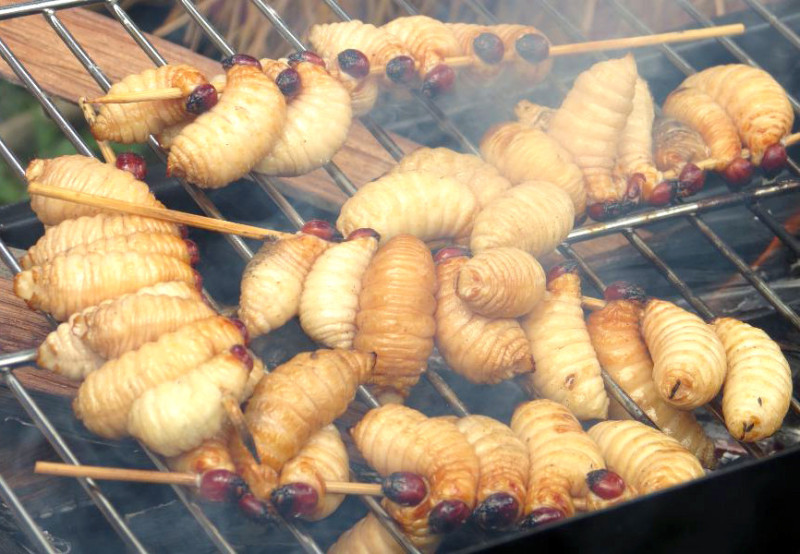Regardless of their names and their ingredients, these local delights blow your mind.
Indonesia is, among so many things, known for its original cuisine. The international community, in particular, must have already been familiar with Indonesian dishes such as rendang, martabak, and rawon. However, there remains a huge culinary tapestry that can be considered strange and perhaps, to certain people’s tastes and preferences, borderline extreme. Having said that, such dishes might appear as an exciting opportunity for particular gourmands who are looking for more than something mainstream. After all, there must be a reason why the locals not only love such odd dishes but also continue to preserve the recipes regardless of the ever-changing times.
The following are some of the strangest, weirdest, yet most beloved Indonesian dishes and delicacies that, at the very least, would spark some curiosity in the expats’ minds.
Please be mindful that the following dishes and their respective descriptions may contain strong language.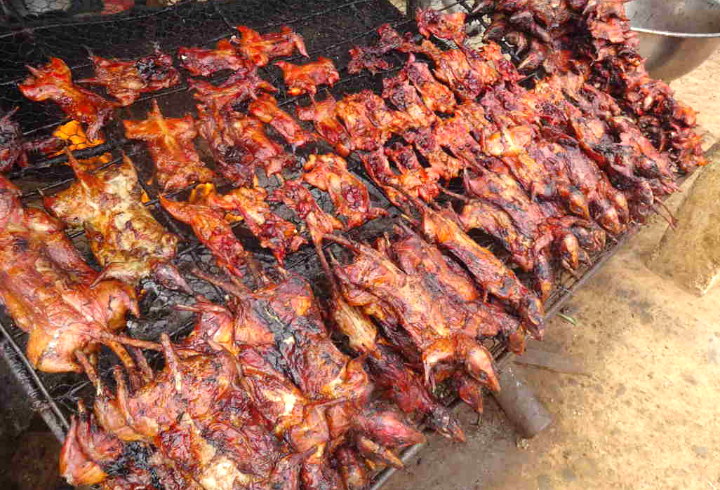
Tikus panggang (grilled rats)
Known as a local street food in Tomohon, North Sulawesi, tikus panggang is exactly what the name implies — a small rat, in its entirety, being grilled over charcoal and fire and presented akin to a barbeque stick. Nonetheless, first-timers and curious gourmands out there should not jump to conclusions as the rats are typically not the ones the pedestrians might spot in the sewer. The merchants of tikus panggang would typically hunt for wild rats that habitate a nearby forest and consume fruits and wild vegetables. Oftentimes, tikus panggang would be complemented with other condiments such as butter oil and rica-rica spice — a spicy condiment originally hailing from Minahasa Peninsula, North Sulawesi.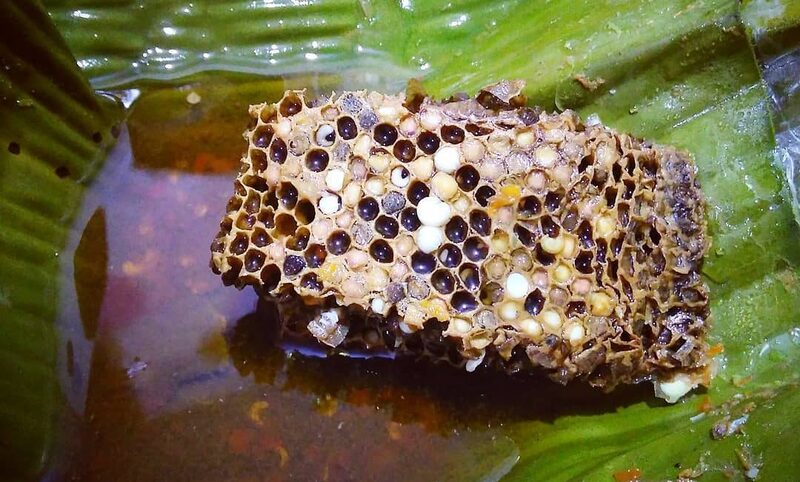
Botok tawon
A beloved local delicacy that finds its origins in Banyuwangi, East Java, botok tawon uses wasps as its main ingredient — complete with the tiny larvae of bees that might still be inside the said wasps. The locals believe that the larvae in a wasp are nutritional as they contain protein and antioxidants. To cook botok tawon, a wasp would be sliced into pieces, after which every piece would be flavoured with various spices and wrapped inside a banana leaf. Afterward, each banana leaf wrap is steamed until it is no longer raw. The Banyuwangi natives also consider botok tawon a sacred dish as it is often served during religious holidays and cultural rites.
Tempoyak
Popular in Jambi and various areas across Sumatra island, tempoyak is, to put it in simpler terms, a fermented durian. To make tempoyak, the meat of a durian should be removed from its seed. Afterwards, the meat is salted and put in a closed, air-tight container or storage for at least seven days. The residue of the fermented durian meat would later be used as a gravy or condiment for dishes such as chicken curry soup or ikan patin. Furthermore, tempoyak is often presented as a gift by the locals during social events such as weddings. Specifically in the southern parts of Aceh, tempoyak is often processed by mixing terasi, turning the former into a variety of sambal (a spicy sauce).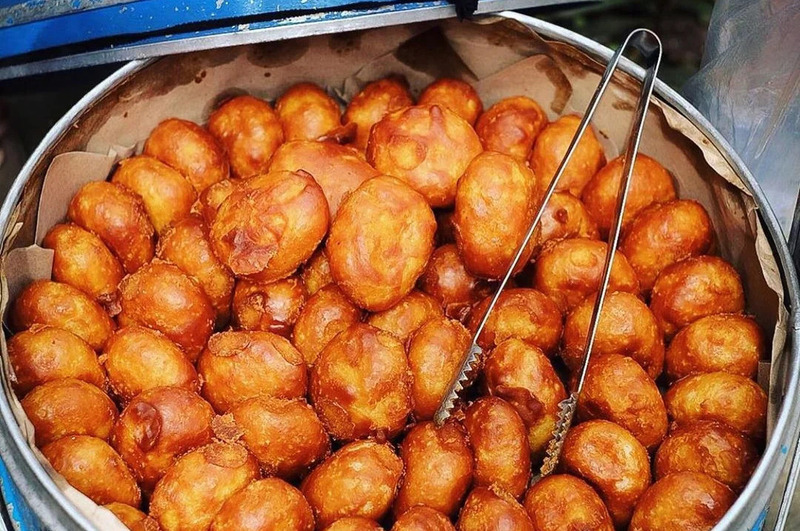
Kue kontol sapi
The name of this dish might easily put one’s imagination into overdrive (the word ‘kontol’ can be translated into English as ‘genital’). Nonetheless, such a word only reflects the fact that this particular delicacy looks like one. Rest assured: kue kontol sapi is not made by an actual cow’s genital. A popular local pastry and street food that finds its origin in Cilegon, Banten, kue kontol sapi is mostly made of fried beras ketan (glutinous rice) and coconut rice that are fried and sweetened using brown sugar. Kue kontol sapi is crunchy on the outside, yet soft and spongy on the inside. Kue kontol sapi is often consumed by the locals while sipping a cup of coffee or tea after mealtime.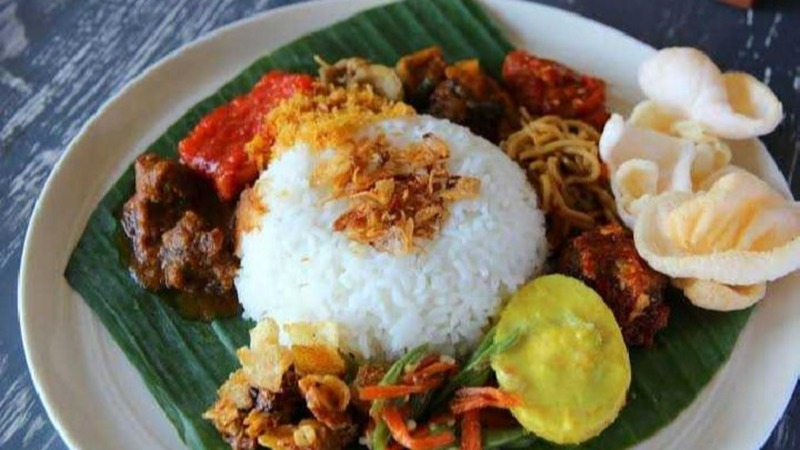
Nasi kentut (fart rice)
Despite its name, nasi kentut is not made of actual farts — though it might smell like one. A beloved local dish in Medan, North Sumatra, nasi kentut was given its name by the locals because the dish often comprises sembukan leaves which the locals also nickname ‘fart leaves’ due to their not-so-fragrant smell. White rice and various condiments would be steamed and wrapped in these ‘fart leaves’, after which it will be served with proteins such as grilled chicken, tempeh, and ikan pepes. Despite its name and its smell, the locals believe that ‘fart leaves’ are nutritional and considered a medicinal herb. The locals would also often use natural potions made of ‘fart leaves’ to cure indigestion and ulcer.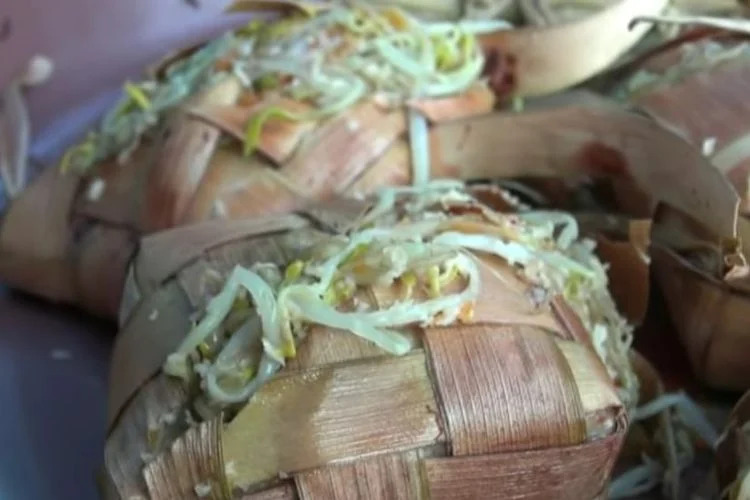
Ketupat jembut
Another scandalously named delicacy, ketupat jembut (the word ‘jembut’ can be translated into English as ‘vagina’) is a famous dish among the Semarang locals in Central Java — not for its name, but for its sociocultural meaning. Its name is rooted in the fact that, essentially, the dish is a ketupat (a diamond-shaped Javanese rice cake) with a vertical piercing that looks like a female human genitalia. Various vegetables and condiments such as boiled cabbage and fried bean sprouts would be stuffed inside the ‘jembut’, making the vagina-like impression more apparent. In recent years, however, local parents would stuff money (instead of vegetables) inside the ‘jembut’ as a gift for their children during Hari Raya, symbolising a life of charitability and one’s gratitude to the higher power.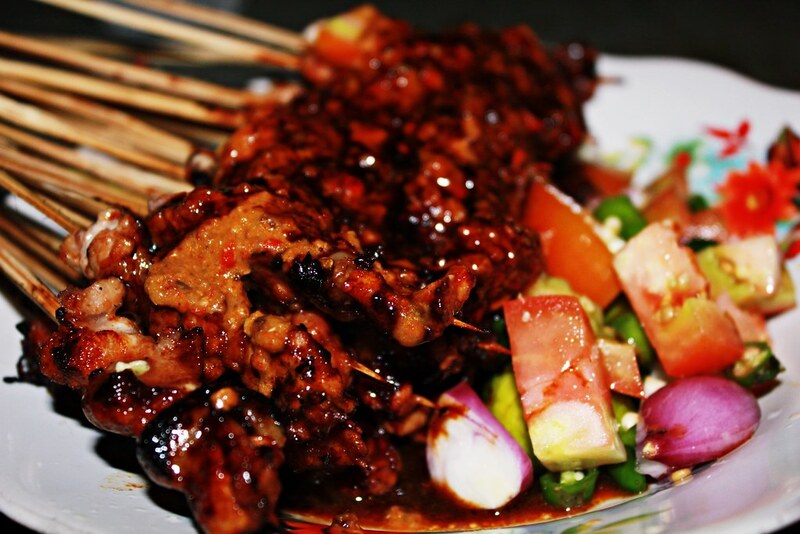
Sate biawak (water monitor lizard satay)
A satay dish that actually uses biawak (water monitor lizard) as its main protein, sate biawak has reached its prominence in various cities in Indonesia, such as Jakarta, Denpasar, and Subang. Often sold as street food, sate biawak is cooked and presented not unlike chicken satay, though the taste might surprise first-timers. With a texture that is relatively more springy than chicken meat, biawak meat is believed to be more nutritional as well; biawak meat is believed by the locals as a remedy to various ailments such as atherosclerosis, chest pains, and reduced vitality. Nonetheless, considering how a biawak possesses fangs, sate biawak is considered a non-halal dish by the Muslims.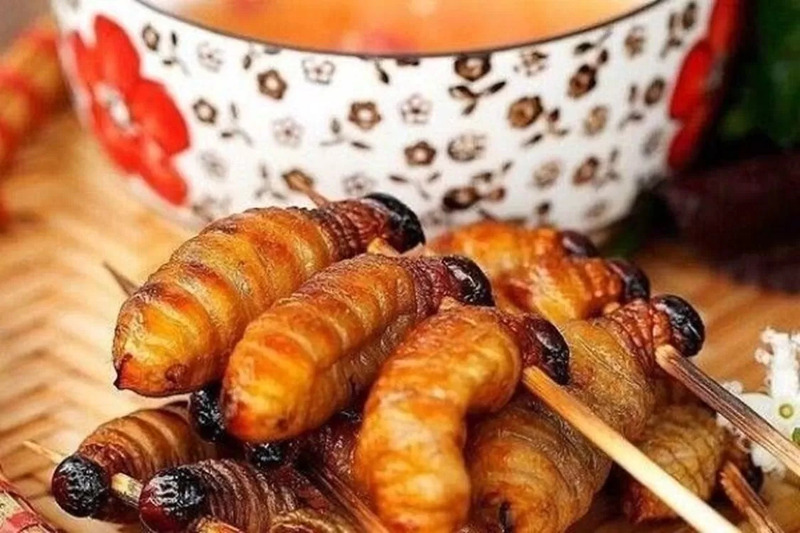
Ulat sagu (sago caterpillar)
Tracing back to its origin in Papua, ulat sagu is exactly that — caterpillars, dead or still alive, that are retrieved from sago trees for human consumption. The cooks and merchants would gather caterpillars from rotting sago trees; the caterpillars, afterwards, could be consumed alive and as they are or further cooked by frying or sautéing with vegetables. The flavour is often described as sweet and rough on the outside, yet soft on the inside. Caterpillars from sago trees are believed to possess a high nutritional value as they contain essential amino acids such as glutamic acid, aspartic acid, and methionine.
Torpedo kambing (goat’s testicle)
Unlike kue kontol sapi, torpedo kambing is, quite literally, an animal testicle to be consumed as a meal by humans. Being one of the most popular local dishes in Bantul, Special Region of Yogyakarta, there are various ways that the locals implement to cook and serve torpedo kambing, such as sautéing it with vegetables or grilling it by adding rica-rica condiments. Nonetheless, it should be noted that cooking a goat’s testicle is not the same as cooking chicken meat as the former is proven to be spongier in texture and more pungent in fragrance than the latter. Containing a high volume of protein, iron, and vitamin B12, a goat’s testicle is also believed to be a surefire remedy for dropping libido and a natural booster for sexual performance.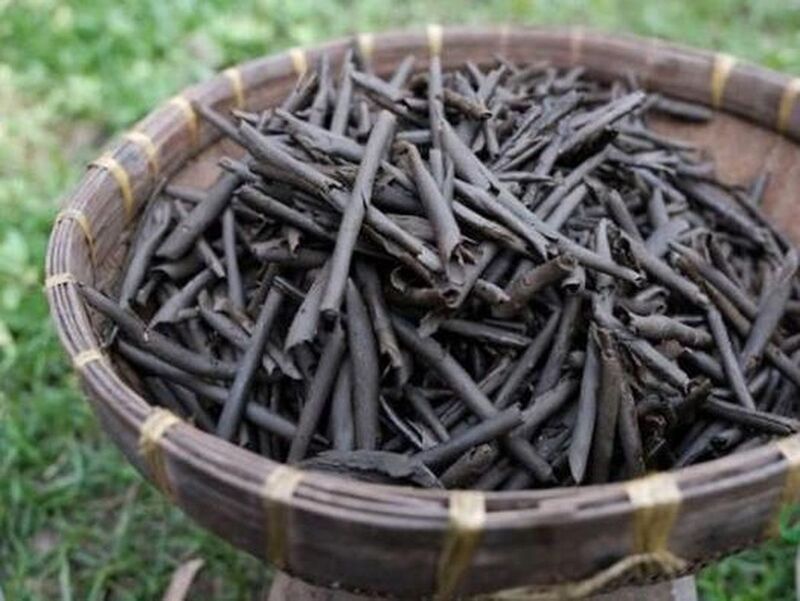
Ampo
Unlike the previous dishes, this one stands out for its ingredients that are neither plants nor animals — instead, this dish is made of clay. Hailing from Tuban, East Java, ampo is often consumed by the locals as an after-meal snack and believed to be a remedy for indigestion. Nonetheless, the cooks and merchants of ampo would not choose a random clay to prepare ampo. The clay, which would be ampo‘s main ingredient, must be clean from dirt, sand, and rubbles. Afterwards, the clay would be soaked in water and hammered using wood, resulting in a box-shaped dough. The dough would later be shaved and smoked over a burning stove for approximately an hour.




